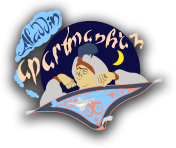The Big Hungarian Lowland

-
Hajdúszoboszló is a small town located in the heart of The Big Hungarian Lowland. It is a wonderful health and holiday resort. It is 200 km from Budapest, 100 km from Tokaj and about 20 km from Debrecen. Hajdúszoboszló has nearly 25 thousand citizens. Read more
-
On this day the anniversary of establishing the Hungary is celebrated solemnly in the whole country, but the most spectacular ceremonies take place in the capital city – Budapest. In the morning the Hungarian flag is hoisted on a mast on the Kossuth Square, and soon after that a military parade departs from Oktagon Square. As a part of celebrating the Saint Stefan Day there is also a procession around a Budapest basilica which is consecrated to him. During this procession the most valuable Hungarian relic, tha hand of Saint Stefan, which is kept in the Saint Stefan Basilic, is walked around the building. It is also the day of beginning Hungarian Harvest Festival. Because of that in many places craft and local art fairs take place. The biggest one is organized on the Castle in Buda. In Hortobágy beside nine-span bridge a big fair connected with country fu takes place. The celebration ususally ends with a beautiful show of fireworks. Read more
-
Aquapark – ball in the pool, adventure in the castle by water Aquapark is a group of outdoor baths with the area of 30 ha. Each of the 13 pools is very popular here. Regardless of age everybody can find something for them. The most popular is the swimming pool with artificial waves. There is also a curative pool with bubbles, which is a perfect place for older people. Read more
-
Aqua Palace, which is located in the centre of Hajdúszoboszló, is composed of 15 thousand square metres of water fun. Recently opened (in March 2010) indoor baths is a part of the biggest swimming pool complex in Europe. It has been designed in mind with the people who desire a nice bathing place and unique wellness experience. Read more

